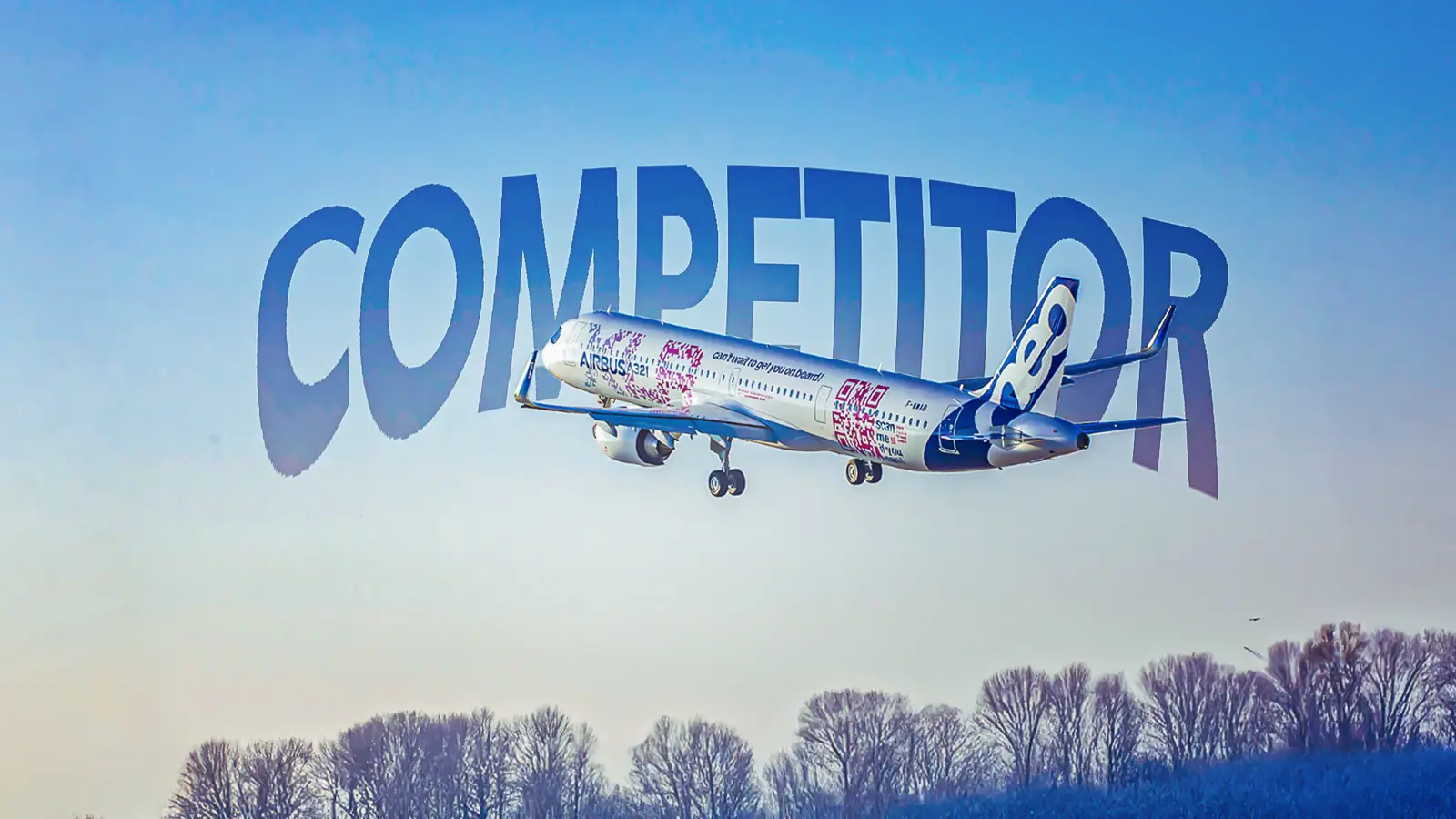Copyright Simple Flying

Whether Boeing will ever produce a true rival to the Airbus A321XLR has become one of the most discussed topics in commercial aviation. As Airbus’s long-range narrowbody continues to dominate orders from airlines seeking fuel efficiency and flexibility, Boeing appears stuck between addressing short-term pressures and planning for its next-generation aircraft. The company’s discontinuation of the Boeing 757 in 2004 created a long-standing gap in the “middle of the market”, routes too long for a standard 737 but too thin for a widebody jet. Airbus has since filled that gap, leaving Boeing with few immediate options. Boeing’s studies into a New Midsize Airplane (NMA) and talk of a next-generation clean-sheet design have not yet materialized. While the manufacturer has explored potential concepts and gathered feedback from suppliers, its official stance remains cautious. Technical, financial, and strategic considerations have slowed any concrete move. Meanwhile, the A321XLR’s entry into service marks a significant shift in airline operations, and Airbus’s first-mover advantage is only growing stronger. The following sections examine Boeing’s position, the A321XLR’s market impact, and the possible futures for Boeing’s response. The Competitive Landscape: A Clear Gap The A321XLR has become the aircraft of choice for airlines seeking to operate long, thin routes, such as transatlantic services or smaller long-haul markets, without the expense of deploying a widebody. It effectively captures the performance niche once held by the Boeing 757, combining long range with the lower operating costs of a single-aisle jet. Airlines like Icelandair, American, and United have embraced the XLR for precisely these advantages. Boeing’s current narrowbody lineup, centered around the Boeing 737 MAX family, falls short in this category. Even the longest-range version of the MAX cannot match the A321XLR’s reach or payload flexibility. This leaves Boeing absent from one of the fastest-growing market segments in aviation. The gap is so pronounced that many 757 operators have transitioned to Airbus aircraft for routes the 737 cannot serve effectively. This competitive imbalance has strategic implications. Airbus is not only gaining orders but also capturing long-term loyalty from airlines looking to streamline their fleets around a single manufacturer. Unless Boeing develops a new offering, Airbus is poised to dominate the mid-market for at least another decade. Boeing’s Strategic Priorities and Risk Management Boeing’s hesitation to launch a direct A321XLR competitor is not solely a matter of engineering; it’s also about corporate survival. After the grounding of the 737 MAX, production delays with the Boeing 787, and ongoing certification challenges for the Boeing 777X, Boeing’s resources and reputation have been under strain. The company has focused on restoring production stability, strengthening supply chains, and rebuilding trust with regulators and customers. Financially, the company is prioritizing debt reduction and cash flow recovery before committing to an entirely new program that could cost tens of billions. Executives have emphasized that any new aircraft must rely on mature technologies, particularly new-generation engines, before development can begin in earnest. Rushing into a new design could risk another costly setback. Strategically, Boeing appears to be waiting for the right technological inflection point. The goal is to introduce a product that isn’t just comparable to the A321XLR but significantly more advanced, potentially incorporating next-generation materials, digital design tools, or propulsion systems. This cautious approach, however, gives Airbus a substantial head start. Technical and Programmatic Hurdles Designing an aircraft that could surpass the A321XLR’s performance would require major advancements in efficiency, aerodynamics, and engine technology. Boeing’s past concept, the New Midsize Airplane, envisioned a slightly wider fuselage and twin-aisle design, but the project stalled due to cost and complexity concerns. A clean-sheet design must not only outperform Airbus’s aircraft but also be economical to produce and maintain. Engines are a key constraint. Current turbofan technology is nearing its efficiency limits, and Boeing has publicly stated that it intends to wait until next-generation propulsion systems are ready. Without a breakthrough in engine efficiency or lightweight materials, matching the XLR’s range and economics may not be feasible in the short term. There are also challenges related to manufacturing and certification. Boeing is still recovering from quality-control issues on existing production lines. Launching a new program would stretch its engineering capacity even further. For a company already navigating multiple ongoing aircraft programs, taking on a brand-new platform is a daunting prospect. Market Demand and Timing Market demand for an A321XLR-class aircraft is strong but not universal. Many airlines have found that the XLR’s range and capacity are ideal for secondary transatlantic routes and expanding point-to-point connectivity. Others, however, see limited need for such performance and prefer larger narrowbodies or smaller widebodies. The middle-market segment remains important, but it’s unclear whether it is large enough to justify Boeing’s investment in a dedicated design at this time. Timing adds another layer of complexity. Even if Boeing were to launch a new program today, development and certification could take eight to ten years. By then, the A321XLR will have matured, production costs will have dropped, and Airbus will be exploring its own next-generation narrowbody. Boeing risks arriving too late to the party unless its offering represents a significant technological leap. Airlines are not waiting. Carriers like Icelandair, American Airlines, and United Airlines, all historically Boeing strongholds, have already incorporated the A321XLR into their future fleet plans, signaling a major strategic shift. Icelandair, once an all-Boeing operator built around the 757, is turning to Airbus for the first time in its modern history, while American and United, long dependent on Boeing’s narrowbodies and widebodies alike, have placed large A321XLR orders to replace their aging 757 fleets. This move goes beyond individual aircraft purchases: it ties these airlines more deeply into Airbus’s ecosystem of training, maintenance, and fleet commonality. The longer Boeing delays launching a viable alternative, the more these traditionally loyal customers become locked into Airbus partnerships and the harder it becomes for Boeing to win them back. Airbus’s First-Mover Advantage Airbus’s strategy to extend the A320neo family into the XLR variant has proven remarkably effective. By leveraging an existing platform, Airbus minimized development costs while introducing a game-changing product. The aircraft’s ability to serve long routes at narrowbody economics has given airlines flexibility and opened new markets. Certification in Europe and growing deliveries mark a major milestone for the manufacturer. Boeing’s lack of a countermeasure has allowed Airbus to capture both customers and market momentum. Many analysts view this as a direct consequence of Boeing’s decision a decade ago to upgrade the 737 rather than pursue a clean-sheet successor. The A321XLR, in contrast, demonstrates the benefits of incremental innovation built on a solid foundation. This head start gives Airbus a durable edge. Every aircraft delivered strengthens its operational record, reliability data, and customer relationships. By the time Boeing reenters the segment, Airbus may have already locked in a generation of airline loyalty, a long-term strategic win that Boeing will find hard to overturn. Boeing’s Possible Futures and the Road Ahead Boeing faces several paths as it decides how to answer the A321XLR. It could stretch the 737 MAX for more range and capacity, though that would only narrow the gap rather than close it. A clean-sheet midsize jet would better compete with Airbus but comes with huge financial and technical risks. The most conservative option is to wait for new engine and material technologies before committing to a next-generation design. Each approach balances cost, timing, and competitiveness differently, but all share one reality: Boeing is late to the market. That delay gives Airbus a growing advantage. The A321XLR is already changing airline network planning, proving strong demand for efficient long-range narrowbodies. Meanwhile, traditional Boeing customers such as Icelandair, American Airlines, and United have turned to Airbus, tying their future fleets, training, and maintenance systems to the A321neo family. Each new XLR delivered makes Boeing’s road back into this segment steeper. To reclaim that ground, Boeing must eventually deliver something that doesn’t just match the A321XLR but surpasses it in range, efficiency, and technology. Until then, Airbus will continue to dominate the middle of the market, and unless Boeing acts soon, the A321XLR may define that space for the next generation.



